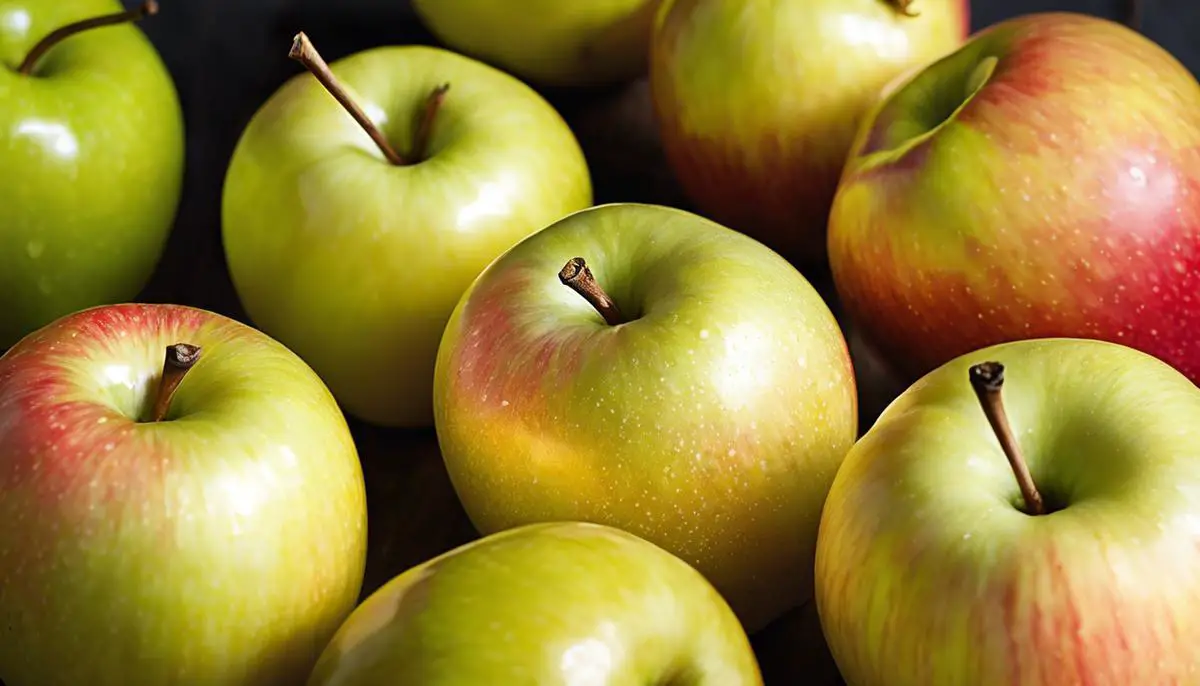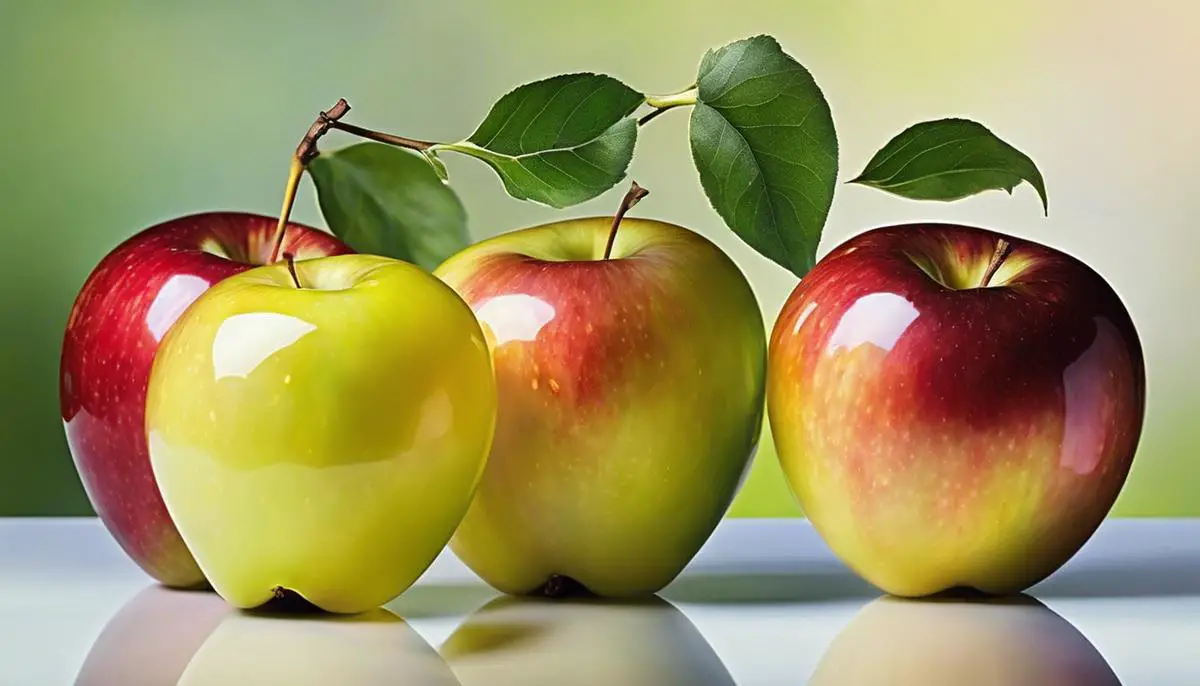Gaze upon the Opal apple, a true gem amongst the fruit-clad boughs, sparking a revolution in the orchards with its sun-kissed hue and harvest that plays by the rules of eco-kindness. This yellow marvel doesn’t just hinge on a fancy name to make it palatable; it throws a punch with flavors that dance – a tango of sweetness coupled with a zip of tang. It’s an apple that doesn’t just sit pretty in the produce aisle; it begs to be devoured raw, transforms snacks into feasts, and sends even the humble pie to gastronomic fame. Let’s dive fork-first into the taste profile and culinary ballet of these golden orbs, without tripping over clumsy, complicated jargon.
Taste Profile and Culinary Uses
Nestled amidst the bustling orchards of opulence, Opal apples emerge as the golden child of the fruit world, a testament to the fine art of apple breeding.
With their sun-kissed, yellow exteriors, these apples beguile consumers with the promise of an eating experience as rich and shiny as their name suggests.
Born from the union of Golden Delicious and Topaz, their lineage heralds a crisp texture and a honeyed sweetness that tantalizes the taste buds; they eschew the humdrum existence of their forebears for a dance of flavor upon the palate.
Their flesh, resistant to browning, remains an ivory bastion against the onslaught of oxidation, holding its poise far longer than its kin on the fruit platter.
Yet, does the taste of Opal apples truly deliver on its glittering premise?
The Opal apple’s flavor profile struts a balance between sweet and tart, making it a versatile contender in the realm of munching apples.
It asserts itself with a zesty tang that undercuts the expected saccharinity, challenging the eater to reconsider their flavor expectations.
Touted not just for its gustatory delights, the Opal apple also boasts a non-GMO verification, its creators having woven sustainability into its very core—a badge of honor in an era where ecological mindfulness garners reverence akin to culinary prowess.
Admirers might find the price tag heftier than the pedestrian apple, but in the eyes of the aficionados, the cost underscores the exclusivity of the Opal experience, a treasure hunt for the palates of the discerning.
In the grand tabulation of apple acclaim, the Opal’s lustrous name sets a lofty expectation—an expectation that its taste meets with unwavering affirmations.
It wields a flavor that dares to shimmer as brightly as its aesthetic, a harmonious symphony underscored by its ethical cultivation.
An apple of the people, yet fit for the gilded tables of royalty, the Opal apple commands its place in the hierarchy of pomological prestige.

Cultivation and Sustainability
Opal apples may just be the golden child of eco-friendly farming – they’ve not only got the sparkle but the substance to prove that environmentally conscious agriculture can yield fruit that’s both sumptuous and sustainable.
The stewards of this sunny-yellow apple have taken the ‘waste not, want not’ adage to heart, turning their orchards into an Eden of recycling and renewable energy.
The magic doesn’t stop there; these apples are not mere show ponies in the green revolution. They’re grown with a commitment to low-impact farming practices, which means saying a firm “no” to those pesky GMOs and a hearty “yes” to traditional cultivation methods that would make even your farmer’s market-loving Aunt Ethel nod in approval.
Eco-friendly farming is as much about what you don’t do as what you do, and the growers of Opal apples embrace this philosophy with a fervor. Pesticides are the outcasts here, banished in favor of natural pest control methods that could have been concocted by Mother Nature herself.
These apples practically hum with the sound of ecological harmony, thriving in settings that encourage beneficial critters and a rich biodiversity that could make a biologist weep with joy.
And while Opal apples may command a price that leaves some wallets feeling a little lighter, it’s a small toll to pay on the highway to agricultural virtue.
When you bite into that crisp, sweet fruit, you’re not just savoring an apple; you’re taking a stand for a planet that’s begging for kindness.

Let’s wrap this up like a fresh Opal apple all snug in its produce bag: this apple is more than just a pretty face with an enviable resistance to the dreaded brown. It’s a testament to good, clean living off the land, proof that you can indeed have your apple and eat it too, without fearing Mother Nature’s scowl. With clean farming practices and taste that holds its own, the Opal apple is here to razzle-dazzle taste buds while keeping things greener than an orchard in spring. Here’s to embracing the Opal with all its crunchy, juicy glory – an apple that’s set the bar high on your snack stack and nestled right into the heart of eco-centric fruit fanatics.